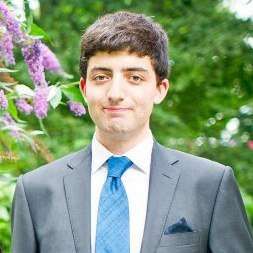Nikolaj Znaider concluded the Hallé Beethoven cycle in emphatic fashion, preceding the Choral Symphony with another ninth symphony, that of Shostakovich. The football-style roar from the sell-out audience at the end of the evening was a good indicator of the quality of the concert.
Hopes were high in Soviet Russia for a colossus of a ninth from Shostakovich in celebration of the end of the war in 1945. Instead, he wrote a relatively short and modest symphony, bringing to mind marching toy soldiers rather than the great works of Beethoven or Schubert. The inane themes of the first movement, a bounding march, are full of athletic humour. The best of several fine woodwind solos came from the piccolo (Ronald Marlowe), whistling merrily against martial percussion, and an interesting hint of unease was conveyed by a subtle but effective momentary strengthening of violin tone near the end of the first movement. The quick movements were impressively dynamic, and the second and fourth movements darker and more inward-looking. The bassoon solo in the fourth was superb, freely unconducted and with another almost imperceptible hint of menace bubbling below the surface, along with several incoming text messages and much rustling in the audience. The finale, again whimsical and almost banal, showed some wonderful counterpoint, closing with a grinning flourish. Finding a concert companion for Beethoven 9 cannot be easy; it needs to be relatively short and not too demanding, but also not mere padding to bulk out the concert. Shostakovich’s Ninth was very successful in this role: interesting and thoroughly entertaining.
Beethoven completed his final symphony in 1824, and in doing so redefined what the medium could achieve. From its stormy D minor opening it proceeds to the most joyous of conclusions in D major, via a pounding Scherzo and tranquil Adagio. Znaider took a fairly steady tempo in the first movement. This may have checked the stormy aggression found in some performances, but it certainly had the despair called for by the composer. The stately tempo highlighted the poignant lyricism to be found amidst the dramatic passages, with some beautifully flowing lines. The contrasting passages were led superbly by the timpani. Using modern drums for the first time in the cycle, some thunderous playing from John Abendstern seemed to drive the orchestra into increasingly intense despair. His powerful solo dotted rhythms in the second movement set the tone for some impressively accentuated string playing, crisp and clear in the movement’s principal theme, though occasionally the intense playing was at the expense of some of the detail from behind them. Laurence Rogers’ horn solo in the trio was well intoned.
There were a couple of smudges from the horn section in the Adagio, but on the whole the wind section played as one, beautifully balanced and united. The string playing around them was marvellously warm, unhurried and reassuring after the preceding turmoil. One of the best moments of the concert came from the lower strings in the finale, in the very first presentation of the famous Ode to Joy theme at pianissimo. All coughing and shuffling stopped, and a sense of collective breath-holding allowed the theme to blossom into its magnificent tutti realisation, led by prominent trumpets. Iain Paterson (bass-baritone) gave as imposing an entry as one could hope for, powerfully calling the chorus to their feet. His was the finest singing of the evening, though the following entry of the full vocal quartet was quite beautiful, and the subsequent fortissimo climax suitably huge. Tenor Andrew Kennedy sounded fresh and youthful in the march passage, though he occasionally seemed to slide up onto notes rather than hitting them directly. The Hallé Choir were impressive in everything from broad fortissimo to quietly beautiful slow passages. The last of these slower moments showed the fine quality of soprano Klara Ek and mezzo Katarina Karnéus, who both sang with great control at hushed dynamics. The finale accelerated to a considerable tempo with enormous joy from all corners of orchestra and choir, and was greeted with rapturous applause.
A Beethoven cycle is a safe plan for an orchestra season, relatively cheap compared to, for instance, a Mahler cycle, and guaranteed to bring the crowds in. The Hallé took the chance to expose a wealth of more modern music. Tonight’s Shostakovich was a particular highlight of this, along with John Adams’ Harmonium, which accompanied the third symphony. As for the Beethoven, it was never short of excellent and often far beyond. It showed just how much symphonic development is owed to Beethoven. The chasm between the first symphony and the Rite of Spring was huge, but by the ninth, Beethoven had created a form which could allow Shostakovich to express the horrors of the twentieth century. The message of universal joy was inescapable tonight, though, and it was a very happy audience which spilled out into the balmy Manchester evening.


